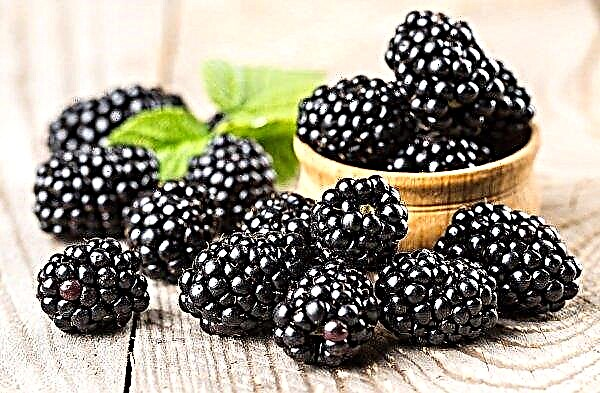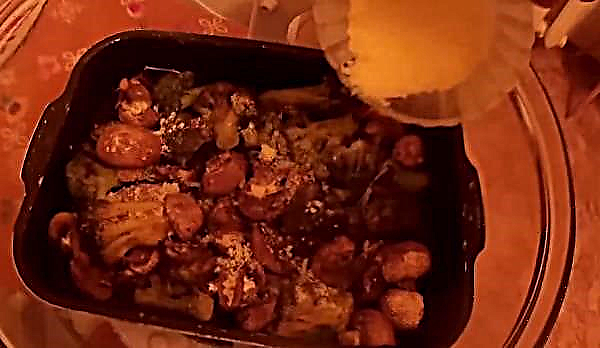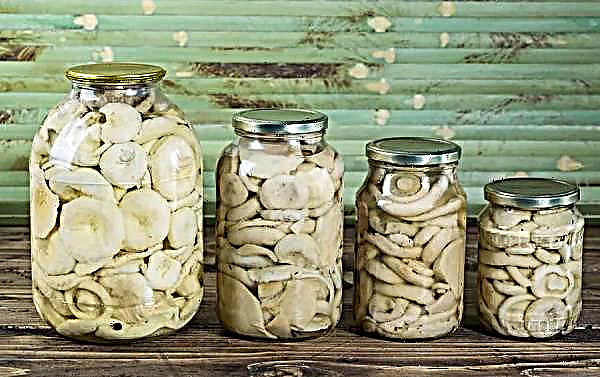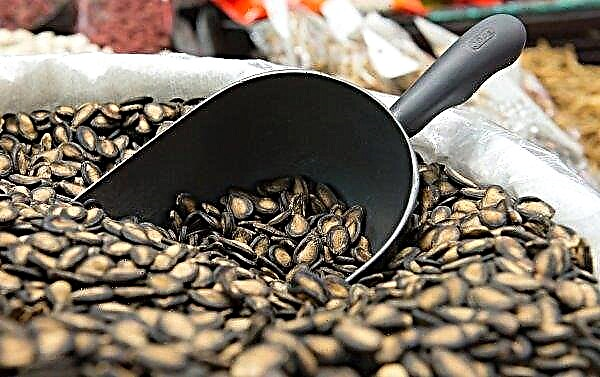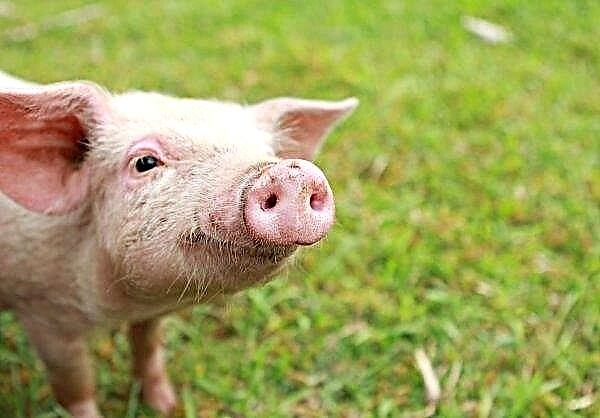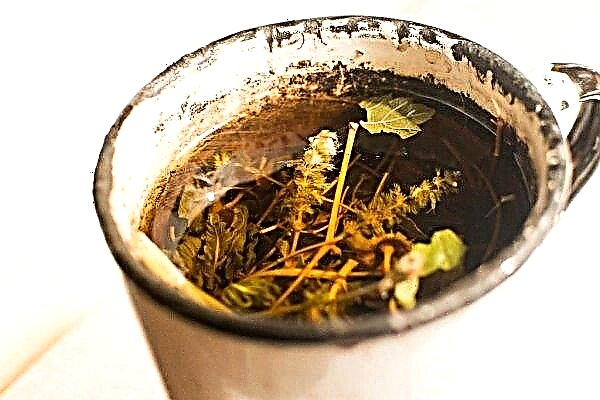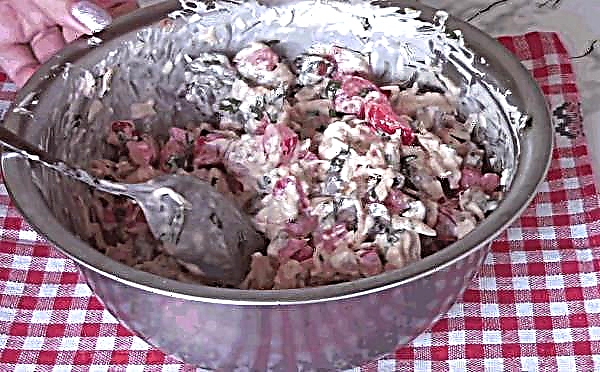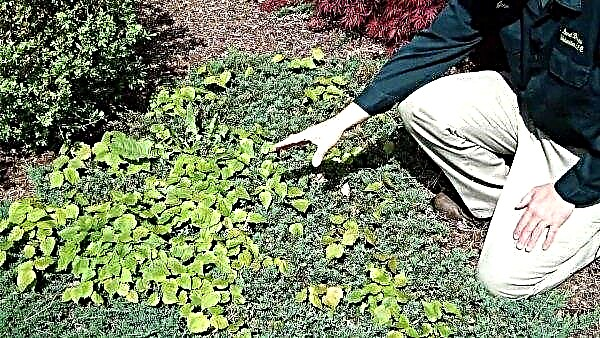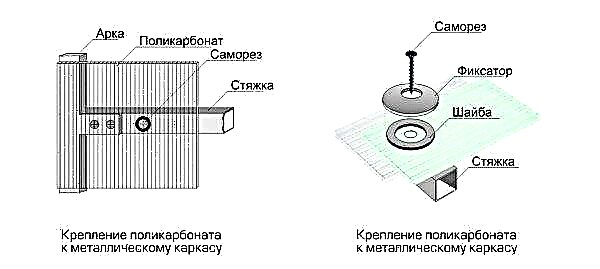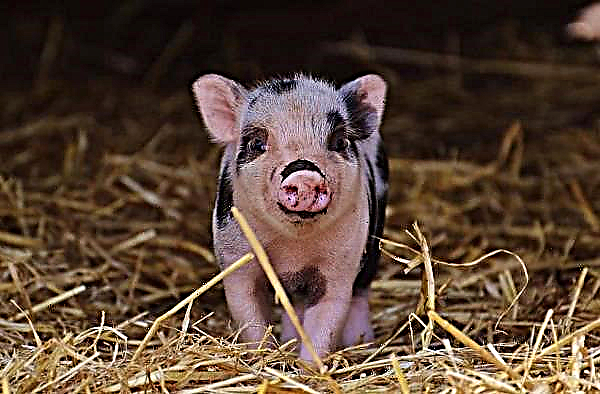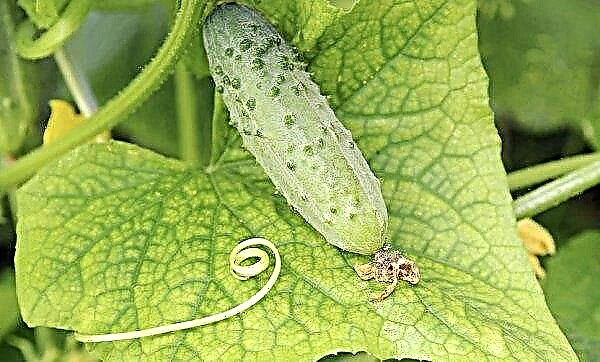White cabbage is widely used in the food industry. Among the variety of varieties, we can distinguish a hybrid of the Dutch selection Menzania F1, which is cultivated in regions with a harsh and temperate climate, and is also famous for its outstanding taste. The main characteristics of the variety, as well as methods of growing it, will be discussed below.
Characterization and description of the variety
Cabbage Menzania F1 is a hybrid variety bred by Dutch breeders. The hybrid was developed by Seminis. Vegetables are cultivated in all regions of Russia, because the plant is resistant to cold snap and arid weather.
Appearance of cabbage and head of cabbage
The vegetable belongs to the plants of average ripening, the growing season lasts from 110-130 days. Technical maturity occurs around the 105th day. Leaf plates are large, horizontal type, their color is green with a gray tint. The surface of the plant is covered with a wax coating.

The head of cabbage has a rounded shape. In the context, the head of the head is white, the outside is gray-green. Its weight is an average of 5 kg, can reach 8 kg. Among other large-fruited hybrid varieties, Menzania F1 stands out for its small stump, which has a dense structure.
Did you know? On the island of Jersey, off the coast of France, cabbage grows, called Jersey, which reaches 4 m in height. The leaf plates of the vegetable are used in cooking, and the stems are used for making canes and furniture parts.
Vegetable application
White cabbage has a pleasant sweet taste, without unnecessary bitterness, therefore it is widely used for making fresh salads. Variety Menzania F1 is specially cultivated for further salting. Due to its large weight and sweet taste, a large amount of pickling product can be obtained.
Resistance to disease
Menzania F1 is immune to fusarium wilt. Due to the natural wax coating on the leaf plates, the vegetable is characterized by high rates of resistance to the onset of thrips.
 The hybrid variety has a high degree of resistance to disease and insect infestation.
The hybrid variety has a high degree of resistance to disease and insect infestation.
Pros and cons of the variety
- Among the advantages of the variety are:
- High immunity to diseases and pests.
- Productivity from 1 ha is up to 48 tons, of which 90% of production is sold.
- The vegetable is not prone to cracking, even in the rainy season.
- Leaves securely cover the head.
- Good taste.
The disadvantage is low resistance to drought. It can be noted that the seeds collected from the hybrid and grown the next year bring less yield and are less resistant to fungal infections. However, this is common to all hybrid varieties.
Video: Cabbage varieties Menzania F1
Features of growing cabbage on the site
To grow strong heads of cabbage, you must correctly select the site for its planting. The place should be well-lit, preferably with a shallow groundwater table - up to 1 m. The soil should be with a neutral or slightly acidic pH.
Important! White cabbage does not grow well in wetlands with acidic soil. The best option for planting will be loamy and clay soils.
Growing seedlings
Seeds for seedlings must first be hardened, for this they are placed in warm water at a temperature of + 40 ° C for 15 minutes, and then transferred to cool water + 20 ° C for 4 minutes. After quenching, the planting material is placed in a solution of the drug "Humate" (2 g per 1 liter of water) to improve growth. In a growth stimulator, seeds contain 3 hours.
Soil substrate is prepared for growing seedlings: fertile soil and humus are taken in equal proportions, 100 g of wood ash are mixed and added. The prepared substrate is poured into a wooden box for seedlings.

Planting material is planted 1 cm deep, at a distance of 4 cm from each other. After planting, it is necessary to irrigate the soil from the spray gun and make a film coating to create a greenhouse effect. Boxes with planted seeds must be kept in a well-lit place at a temperature of + 20 ° C, until the first shoots appear in 5-7 days, after which you need to get rid of the film cover.
It is necessary to plant seedlings in open ground at the end of April, when the air heats up to + 20 ° С. The soil on the site is previously loosened, holes 30–15 cm deep are made at a distance of 30 cm. The plants are carefully introduced into the hole to the first leaf, and then they are buried. After planting, seedlings are watered with 0.5 l of water and a small mound is formed around the hole.

Reckless way
Planting seeds in open ground is carried out in the period from April 20 to May 1, when the air warms up to + 20 ° C. To disinfect the seeds, they are pre-soaked in a light pink solution of potassium permanganate for 4 hours. Then the seeds are dried on a windowsill in direct sunlight.
3 weeks before planting, the soil on the site must be fertilized with 5 kg of humus and 300 g of wood ash per 1 m².
The process of planting seeds in open ground:Important! When planting cabbage, a distance of 30 cm between the holes and 60 cm between the rows must be observed.
- Dig a hole 4 cm deep.
- Pour 500 g of water.
- Plant 2-3 seeds per well.
- To fill up with the earth.
- Form a small mound around the hole to indicate the location of the planting material.

Landing care
The crop yield will depend on the proper care of planting. Cabbage needs watering, fertilizing and preventing diseases and pests.
Watering and feeding
Seedlings are watered in the evening, every 2 days. If the weather is rainy, watering is done every 5 days. Contribute 1 liter of water to each bush. The liquid should be left standing for 2 days, its temperature - from + 25 ° С to + 30 ° С.
Important! Top dressing is best done after watering to avoid burns to the root system.
Fertilizer Schedule:
- In early May, you need to make the first feeding from: 2 g of potassium, 3 g of superphosphate, 3 g of nitrate, diluted in 1 liter of water. 50 ml of fertilizer are applied to each bush.
- In late May - early June, a second top dressing from: 4 g of potassium, 6 g of superphosphate, 6 g of nitrate, diluted in 1 liter of water. One plant needs 50 ml of fertilizer.
- In the middle of June, the third top dressingIt is made from: 10 liters of water and 10 g of saltpeter. 2 l of fertilizer is used per well.
- Fourth fertilizer is carried out during the period of active formation of the head of cabbage, it is prepared from: 5 g of urea, 6 g of superphosphate, 7 g of potassium, diluted in 10 l of water. For one plant, 1 l of fertilizing is used.

Weed removal and hilling
After each watering and rain, you need to loosen the soil near the plant. To better maintain moisture, the earth can be mulched with peat, a layer of 3 cm. Weeds are removed as they appear. Weed plants are uprooted to prevent their further growth.
Hilling cabbage is carried out 15 days after planting in open ground. The soil is turned under a bush to create support for fragile leaves, and also to prevent the curvature of the leg. Subsequent hilling is carried out with an interval of 3-4 weeks, in order to saturate the soil with oxygen and prevent the formation of mold on the rhizome.
 Also, the procedure will help the plant evenly distribute nutrients, make watering and fertilizing more comfortable.
Also, the procedure will help the plant evenly distribute nutrients, make watering and fertilizing more comfortable.
Pest and Disease Control
The most dangerous diseases for the vegetable are downy mildew and alternariosis.
Powdery mildew - fungal infection, which manifests itself in the form of spots of gray or yellow color on the outside of the leaf plate. A whitish coating forms on the underside of the sheet. Due to infection, the leaves wither and die, and plant growth slows down.
Control measures:
- Disinfection of soil and planting material with a light pink solution of potassium permanganate.
- Processing plants with a 1% solution of Bordeaux fluid (100 g per 10 liters of water).
- Loosening the soil near the plant.

Alternariosis refers to varieties of fungal infections that occur with high humidity. Spores of the fungus can be carried downwind or with drops of water. You can recognize the disease by black dots, which eventually become larger in size, moldy. Leaves rot and become unfit for human consumption.
The fight against alternariosis:
- When planting seedlings in a hole, it is necessary to put 20 g of wood ash.
- The soil near the plant needs to be loosened and weed removed.
- Every 15 days, vegetables and the soil beneath them should be irrigated with a solution of copper sulfate (100 g per 10 liters of water).
 Among pests, the most dangerous for cabbage is aphid. The insect eats the juice of the leaf blades, leading to their twisting and wilting.
Among pests, the most dangerous for cabbage is aphid. The insect eats the juice of the leaf blades, leading to their twisting and wilting.Fighting aphids:
- Harvesting weed on the site.
- Manual cleaning of leaves affected by the pest.
- Spraying with a soap-ash solution of 300 g of soap, 300 g of ash in 10 l of water. Irrigation is carried out in the morning and in the evening, for 3 days. After 7 days, the procedure is repeated.

Harvesting and storage
Mid-season cabbage should be harvested in late August - early September. The shelf life of the culture is 2–4 months from the date of collection.
When the lower leaf plates of the cabbage begin to turn yellow - this means that it is ripe and ready for harvest. Vegetables can be uprooted from the garden along with the root or pruned by a stump under a head of cabbage. The cut should be done at a distance of 3 cm from the head - this will extend the shelf life of the vegetable.
Did you know? Georgia, Greece and Italy compete for the right to be called the homeland of cabbage.
Sliced cabbage must be immediately folded onto a wooden surface to dry. Then the vegetables are moved to the basement, where they are placed on shelves. Indoor air temperature must be kept up to + 7 ° С, humidity should be 80%.
So, cabbage Menzania F1 is a mid-season variety that is distinguished by excellent taste and high rates of resistance to infections and pests. Due to the endurance of the plant, its cultivation is carried out both in the southern and northern regions of the country.

